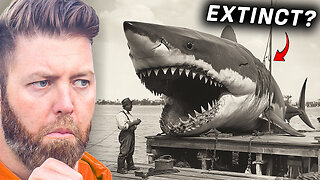Premium Only Content

AFRS Christmas 47-12-25
Christmas, celebrated by most Christians on December 25, commemorates the birth of Jesus of Nazareth. Americans, like many of the world’s peoples, have developed their own Christmas traditions and observances, and these have changed greatly over time.
Today, most Americans blend religious and secular customs with their own family traditions, often incorporating food, decorations and rituals from places they or their ancestors once called home. Roast turkey and ham are popular for Christmas dinner throughout the country, but depending on the region, so are tamales, roast goose with red cabbage, crawfish jambalaya, roast pork or “seven fishes” seafood salad.
In the Southwest, luminarias — lanterns made from brown paper bags weighted down with sand and illuminated by a lit candle — are displayed on Christmas Eve. Many Mexican Americans celebrate Las Posadas, a procession that re-enacts Mary and Joseph’s search for a place to bed down in Bethlehem. Swedish Americans hold St. Lucia festivals, and in Puerto Rico there are parrandas, where friends go from one house to the next singing traditional songs, “surprising” their friends and waking them with their music.
DEVELOPMENT OF THE AMERICAN CHRISTMAS
The early New England Puritans frowned on boisterous Christmas celebrations. In 1659, the Massachusetts colonists briefly criminalized observance of the day, and Christmas remained a regular workday in much of New England and Pennsylvania. Other parts of British North America, however, celebrated with gusto, with costumed revelers going door to door and receiving small gifts of food and drink.
The modern, commercialized Christmas began to emerge in the 19th century with the new custom of purchasing gifts for young children. Seasonal “Christmas shopping” began to assume economic importance.
Other Christmas traditions similarly began during the 19th century. Santa Claus — derived from the Dutch Sinter Klaas and the German Saint Nicholas — assumed the persona of a jolly dispenser of gifts and pilot of a reindeer-drawn sleigh through such works as the 1823 poem “A Visit from Saint Nicholas.”
Germany is credited with starting the tradition of Christmas trees in the 16th century. According to legend, the Protestant reformer Martin Luther first added lighted candles to a tree to remind his children of the wonders of God’s creation. Christmas trees became popular in Britain and the United States in the 19th century.
Today, many Americans purchase a fresh evergreen tree or a reusable aluminum and plastic model and decorate it with lights and ornaments. In some families, Christmas gifts appear under the tree on the morning of December 25, deposited there by family members — or, as small children believe, delivered by Santa Claus after he lands his reindeer and sleigh on the roof and comes down the chimney.
Mass-produced Christmas cards began to appear in the last quarter of the 19th century. Today, these might depict religious scenes or convey secular, often humorous, messages. On the Internet, electronically transmitted “e-cards” are increasingly popular; nonetheless, Americans will mail some 16.6 billion Christmas cards, letters and packages over the holidays.
-
 15:40
15:40
Bearing
1 hour agoEnd Stage Trump Derangement | Rosie O'Donnell is NOT Doing Well 😬
1.74K20 -
 35:19
35:19
hickok45
4 hours agoSunday Shoot-a-Round # 256
6.08K11 -
 41:20
41:20
PMG
16 hours ago $0.39 earned"The No B.S. Guide to Getting Your Life together in 2024!"
4.14K -
 14:22
14:22
Forrest Galante
16 hours agoDoes The Megalodon Still Exist?
97.4K28 -
 26:48
26:48
Stephen Gardner
11 hours ago🔥BREAKING: Vladimir Putin JUST shocked NATO | Will only negotiate with Trump!
140K325 -
 2:45:39
2:45:39
Tundra Tactical
14 hours ago $36.49 earnedTundra Nation Live : The Worlds Okayest Gun Live Stream
71.8K2 -
 17:06
17:06
Professor Nez
12 hours ago🚨BREAKING: Elon Musk to BUY MSNBC!? Dems STUNNED by Brian Williams’ Viral Video!
65.1K84 -
![If You Smell LALALALA What CHiLi IS COOKING!!... #RUMBLETAKEOVER [Overwatch 2]](https://1a-1791.com/video/s8/1/e/s/X/3/esX3u.0kob-small-If-You-Smell-LALALALA-What-.jpg) 4:27:40
4:27:40
CHiLi XDD
14 hours agoIf You Smell LALALALA What CHiLi IS COOKING!!... #RUMBLETAKEOVER [Overwatch 2]
38.9K2 -
 12:00:03
12:00:03
Delnorin Games
14 hours ago🔴 Live - Star Citizen
94.6K15 -
 1:39:44
1:39:44
HELMET FIRE
16 hours agoDEADROP IS BACK!
167K11